APUSH Review
1/27
Earn XP
Description and Tags
some periods 1&2 mostly 7-9
Name | Mastery | Learn | Test | Matching | Spaced |
|---|
No study sessions yet.
28 Terms
“Moreover, we command you in virtue of holy obedience that, employing all due diligence in the premises, as you also promise—nor do we doubt your compliance therein in accordance with your loyalty and royal greatness of spirit—you should appoint to the aforesaid mainlands and islands worthy, God-fearing, learned, skilled, and experienced men, in order to instruct the aforesaid inhabitants and residents in the Catholic faith and train them in good morals. Furthermore . . . should anyone thus contravene, we strictly forbid all persons of whatsoever rank, even imperial and royal, or of whatsoever estate, degree, order, or condition, to dare without your special permit or that of your aforesaid heirs and successors, to go for the purpose of trade or any other reason to the islands or mainlands, found and to be found, discovered and to be discovered, towards the west and south, . . .”
- Pope Alexander VI, Papal Bull Inter caetera, May 4, 1493
What was the political purpose of Pope Alexander VI’s Demarcation Bull?
To legitimize and defend Spain’s territorial claims in the Americas
“Moreover, we command you in virtue of holy obedience that, employing all due diligence in the premises, as you also promise—nor do we doubt your compliance therein in accordance with your loyalty and royal greatness of spirit—you should appoint to the aforesaid mainlands and islands worthy, God-fearing, learned, skilled, and experienced men, in order to instruct the aforesaid inhabitants and residents in the Catholic faith and train them in good morals. Furthermore . . . should anyone thus contravene, we strictly forbid all persons of whatsoever rank, even imperial and royal, or of whatsoever estate, degree, order, or condition, to dare without your special permit or that of your aforesaid heirs and successors, to go for the purpose of trade or any other reason to the islands or mainlands, found and to be found, discovered and to be discovered, towards the west and south, . . .”
How did Pope Alexander VI’s papal bull contribute to the Age of Exploration?
It encouraged other European nations, such as England and Portugal, to claim land in the Americas.
“Almost a thousand years ago, American Indians built a city along the Mississippi River in the middle of North America. . . . At its peak around AD 1100, the city of Cahokia covered more than five square miles and was made up of 120 earthen pyramids (often called ‘mounds’ today). Built entirely of packed earth, the main pyramid—‘Monks Mound’—covered fifteen acres and rose in three major terraces to a height of one hundred feet, making it the third largest in the Americas. A fifty-acre rectangular plaza sat at the foot of this tremendous monument.
A day in the life of an average Cahokian family involved spending most of the day working in the fields, fishing, and hunting. The women and girls probably tended the crops. . . . The men and boys worked in the fields too. . . . Most evening meals would find all gathered together. . . . By 1200, the population of the city had probably fallen to less than 5,000 people; by 1250, that figure was probably no more than 2,000. In the countryside, many thousands of farmers had already left. No more than a few thousand remained by 1250.”
- Timothy R. Pauketat, Historian, “Cahokia: A Pre-Columbian American City,” 2011
2.
Which of the following best explains the decline of Cahokia’s population?
Environmental factors such as drought or overhunting
“Here is contained a dispute, or controversy between Bishop Friar Bartolomé de las Casas, or Casaus, formerly bishop of the royal city of Chiapa which is in the Indies, a part of New Spain, and Dr. Gines de Sepulveda, chronicler to the Emperor, our lord, in which the doctor contended: that the conquests of the Indies against the Indians were lawful; and the bishop, on the contrary, contended and affirmed them to have been, and it was impossible for them not to be, tyrannies, unjust and iniquitous. Which question was examined and defended in the presence of many learned theologians and jurists in a council ordered by his Majesty to be held in the year one thousand and five hundred and fifty in the town of Valladolid. Year 1552.”
1.
In the excerpt, Bartolomé de Las Casas objects to which of the following?
The enslavement of Indigenous people in Spain’s American colonies
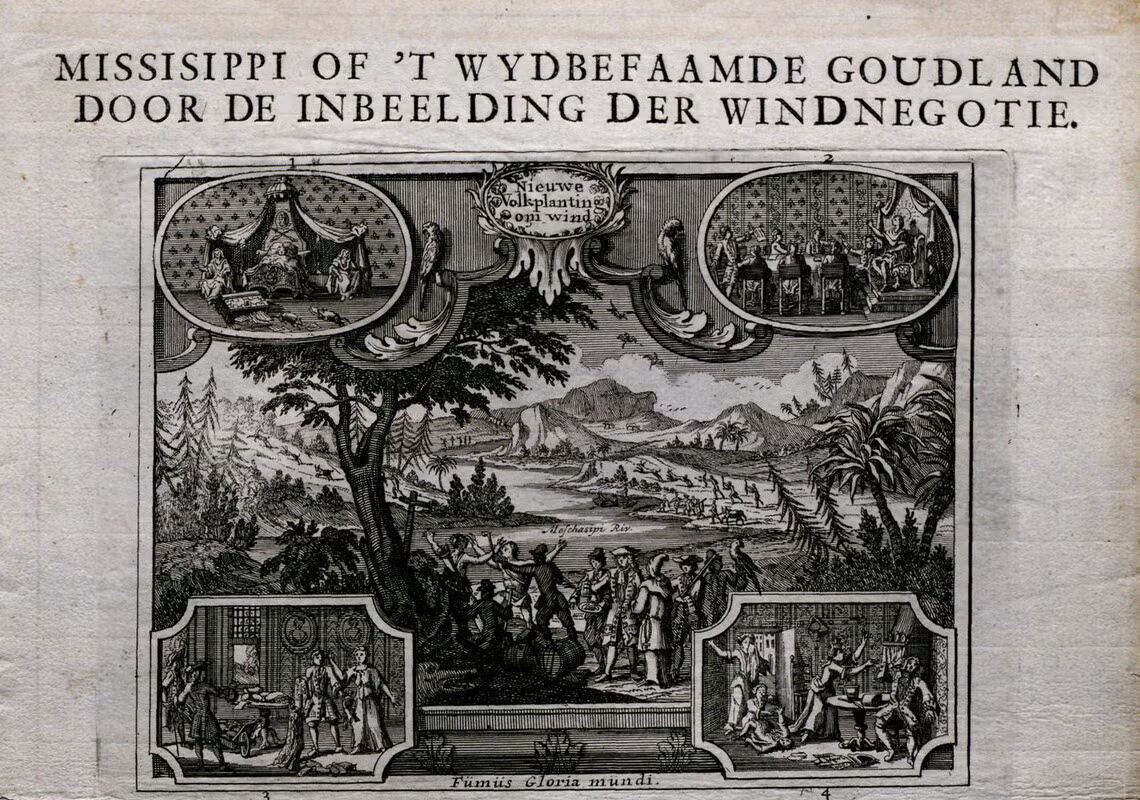
1.
Trading partnerships between Europeans and Native Americans were least common in
New Spain
“Po’pay’s great achievement was to coordinate the Pueblos. The enormous, open distances of the Southwest posed a major problem. He solved it by dispatching runners carrying knotted ropes, each separate knot to be untied, one day at a time, until the chosen day, August 11, 1680. The runners had to deal with language differences as well. There was no distinct ‘Pueblo’ people, speaking one language and sharing one culture. Instead, the Spanish conquerors had found Keres, Tompiros, Tewas, Tiwas, Towas, Piros, and Zuni, all living in similar-looking adobe villages (pueblos, hence the name), as well as Utes, Navajos, and Apaches. Their languages differed greatly, and their relations with one another were not always friendly. Nonetheless, Po’pay’s plan worked nearly perfectly. The Spanish rulers in Santa Fe received only the barest warning before the revolt broke out.
Despite the differences, as the late historian Jack D. Forbes demonstrated decades ago, the Southwest’s people were not strangers to one another at all. Neither distance nor language formed a barrier against communication. By the time the Spaniards arrived, the settled tribes had also built relationships and customs with nomadic groups (the Utes, Navajos, and Apaches).”
- Edward Countryman, Historian, “The Pueblo Revolt,” 2011
1.
Which of the following is evidence that supports the second paragraph’s claim?
Migratory tribes such as the Apache traded buffalo for pueblo-dwelling tribes’ agricultural goods.
“Po’pay’s great achievement was to coordinate the Pueblos. The enormous, open distances of the Southwest posed a major problem. He solved it by dispatching runners carrying knotted ropes, each separate knot to be untied, one day at a time, until the chosen day, August 11, 1680. The runners had to deal with language differences as well. There was no distinct ‘Pueblo’ people, speaking one language and sharing one culture. Instead, the Spanish conquerors had found Keres, Tompiros, Tewas, Tiwas, Towas, Piros, and Zuni, all living in similar-looking adobe villages (pueblos, hence the name), as well as Utes, Navajos, and Apaches. Their languages differed greatly, and their relations with one another were not always friendly. Nonetheless, Po’pay’s plan worked nearly perfectly. The Spanish rulers in Santa Fe received only the barest warning before the revolt broke out.
Despite the differences, as the late historian Jack D. Forbes demonstrated decades ago, the Southwest’s people were not strangers to one another at all. Neither distance nor language formed a barrier against communication. By the time the Spaniards arrived, the settled tribes had also built relationships and customs with nomadic groups (the Utes, Navajos, and Apaches).”
- Edward Countryman, Historian, “The Pueblo Revolt,” 2011
3.
Which of the following was a consequence of the event discussed in the excerpt?
Secularization of Spanish colonization
“Po’pay’s great achievement was to coordinate the Pueblos. The enormous, open distances of the Southwest posed a major problem. He solved it by dispatching runners carrying knotted ropes, each separate knot to be untied, one day at a time, until the chosen day, August 11, 1680. The runners had to deal with language differences as well. There was no distinct ‘Pueblo’ people, speaking one language and sharing one culture. Instead, the Spanish conquerors had found Keres, Tompiros, Tewas, Tiwas, Towas, Piros, and Zuni, all living in similar-looking adobe villages (pueblos, hence the name), as well as Utes, Navajos, and Apaches. Their languages differed greatly, and their relations with one another were not always friendly. Nonetheless, Po’pay’s plan worked nearly perfectly. The Spanish rulers in Santa Fe received only the barest warning before the revolt broke out.
Despite the differences, as the late historian Jack D. Forbes demonstrated decades ago, the Southwest’s people were not strangers to one another at all. Neither distance nor language formed a barrier against communication. By the time the Spaniards arrived, the settled tribes had also built relationships and customs with nomadic groups (the Utes, Navajos, and Apaches).”
- Edward Countryman, Historian, “The Pueblo Revolt,” 2011
2.
Which of the following contributed to the event discussed in the excerpt?
Religious oppression of Native peoples by the Spanish
What factor best explains why the western territories and states were first to grant women suffrage?
An uneven gender ratio led to the earlier adoption of attitudes supporting women’s voting rights in western territories and states.
2.
Lawless violence directed at nineteenth-century African Americans was protected when
Union military occupation of southern states ended
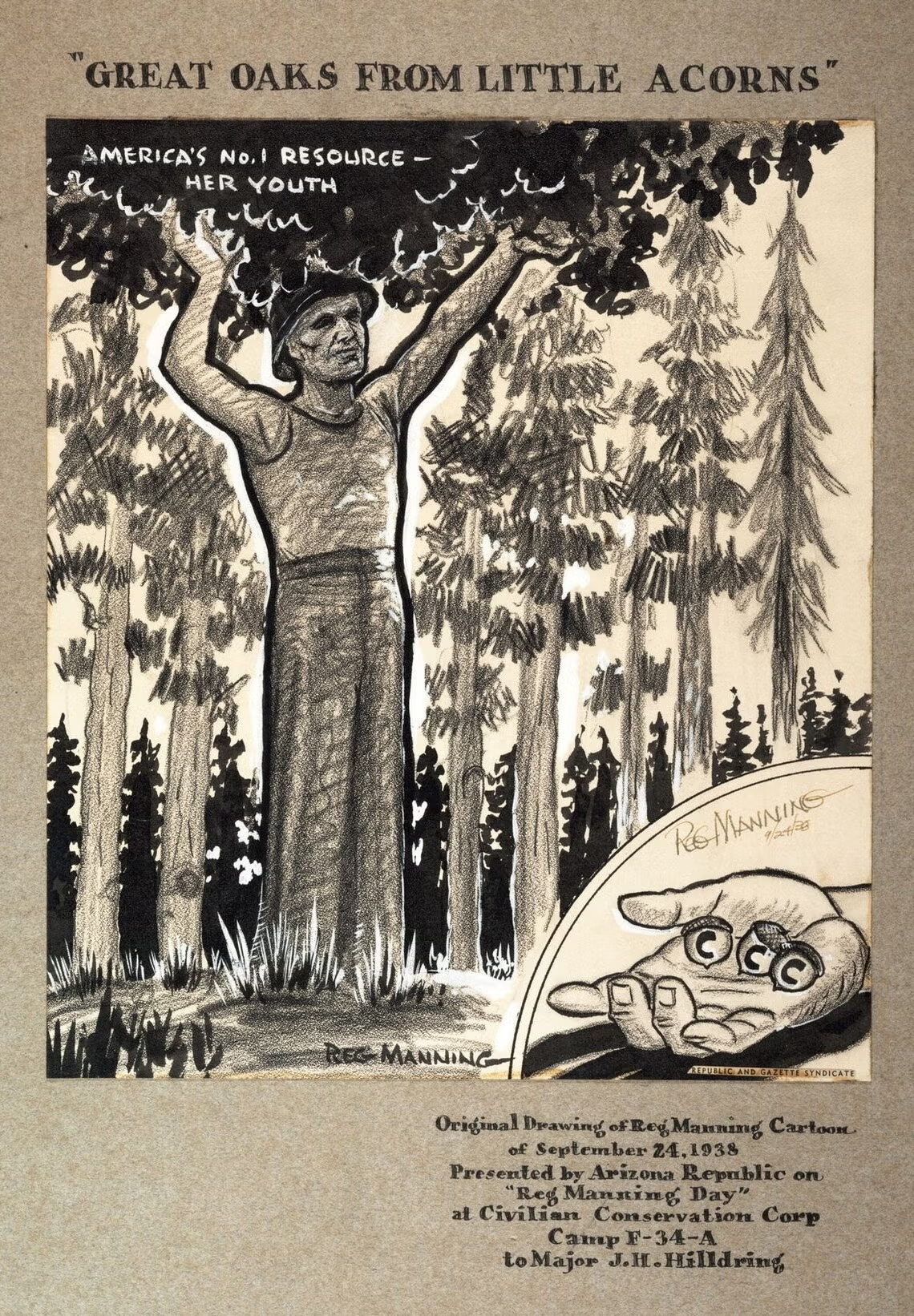
2.
What does this 1938 poster suggest about work opportunities available in the CCC?
Young men were put to work in the CCC on reforestation efforts.
3.
How did the New Deal alter the expectations of Americans toward the role of the federal government?
As a result of the New Deal, many Americans supported an increase to the scope and size of the government.
A later example of US policy that attempted to assimilate Native Americans and relocate them away from reservations was
the Termination Act of 1953
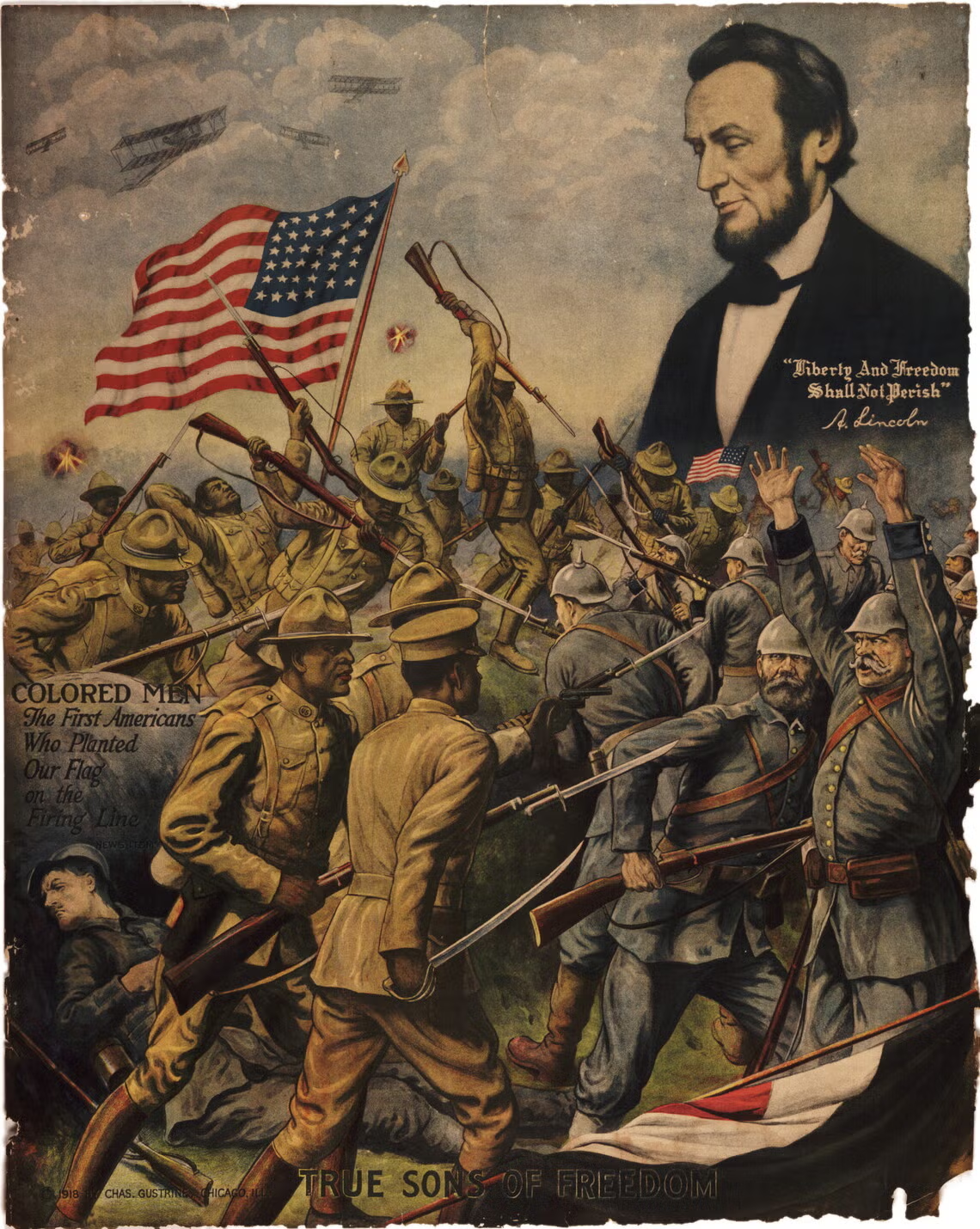
1.
The events taking place in this print occurred during which war?
World War I
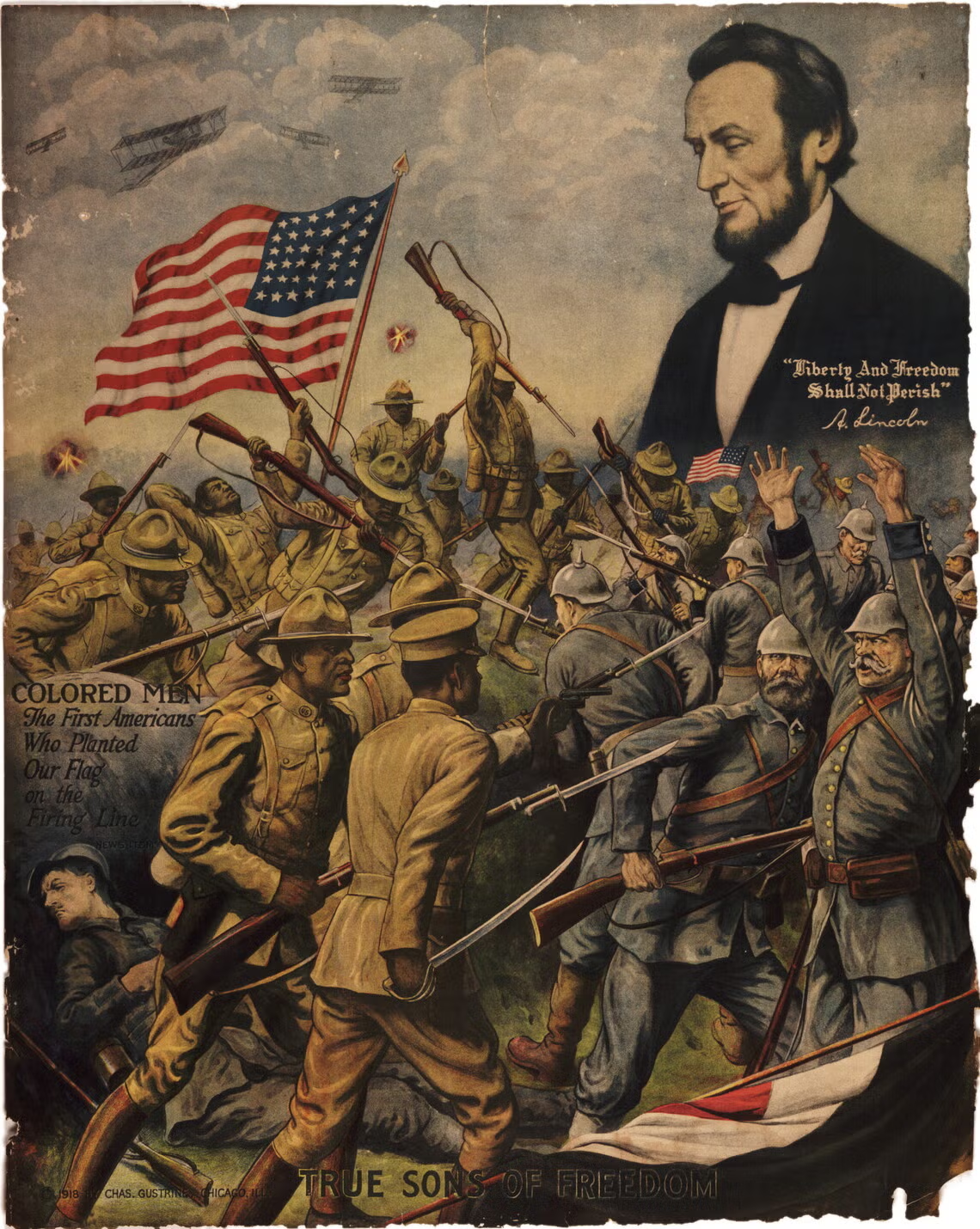
3.
What is this poster’s message?
African Americans’ military service entitled them to respect from fellow citizens and the protection of their freedoms at home.
After WWI ended with the Treaty of Versailles (1919), the reduction in demand for food led to
a drop in the price of wheat, along with farmers’ profits
2.
Which wealthy capitalist used profits from this project to create a university?
Leland Stanford
3.
The Central Pacific Railroad was mainly built by laborers born in
China
1.
Munshi’s argument illustrates how
the effects of the Chinese Exclusion Act were felt well into the twentieth century
Which of the following events might explain the feelings the author attributes to Americans living in the 1940s–1960s?
Launch of Sputnik
3.
A family such as the one described in this excerpt likely engaged in which of the following?
Purchasing a television
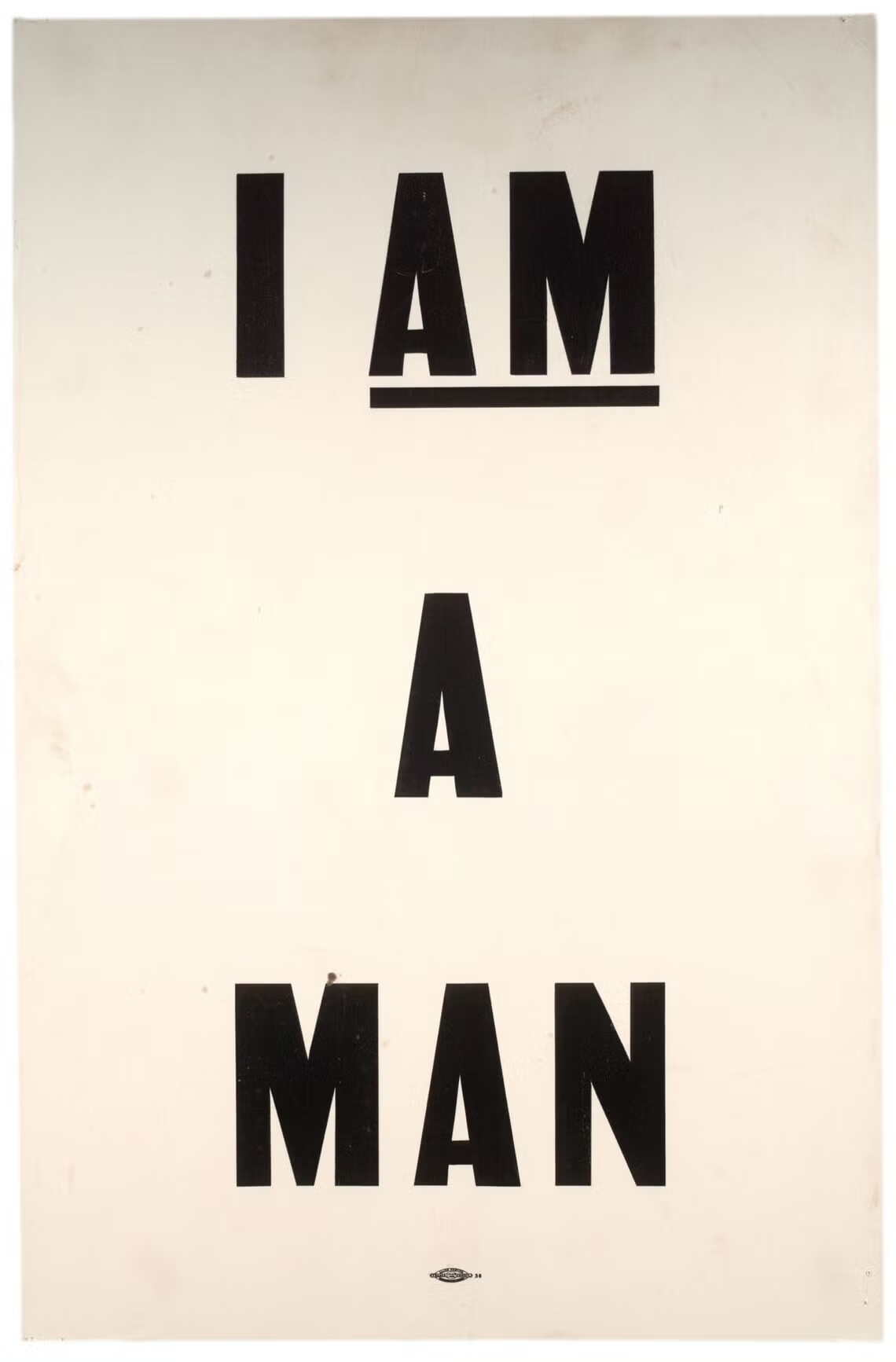
.
In which of the following historical events was this sign used?
Memphis Sanitation Workers’ Strike
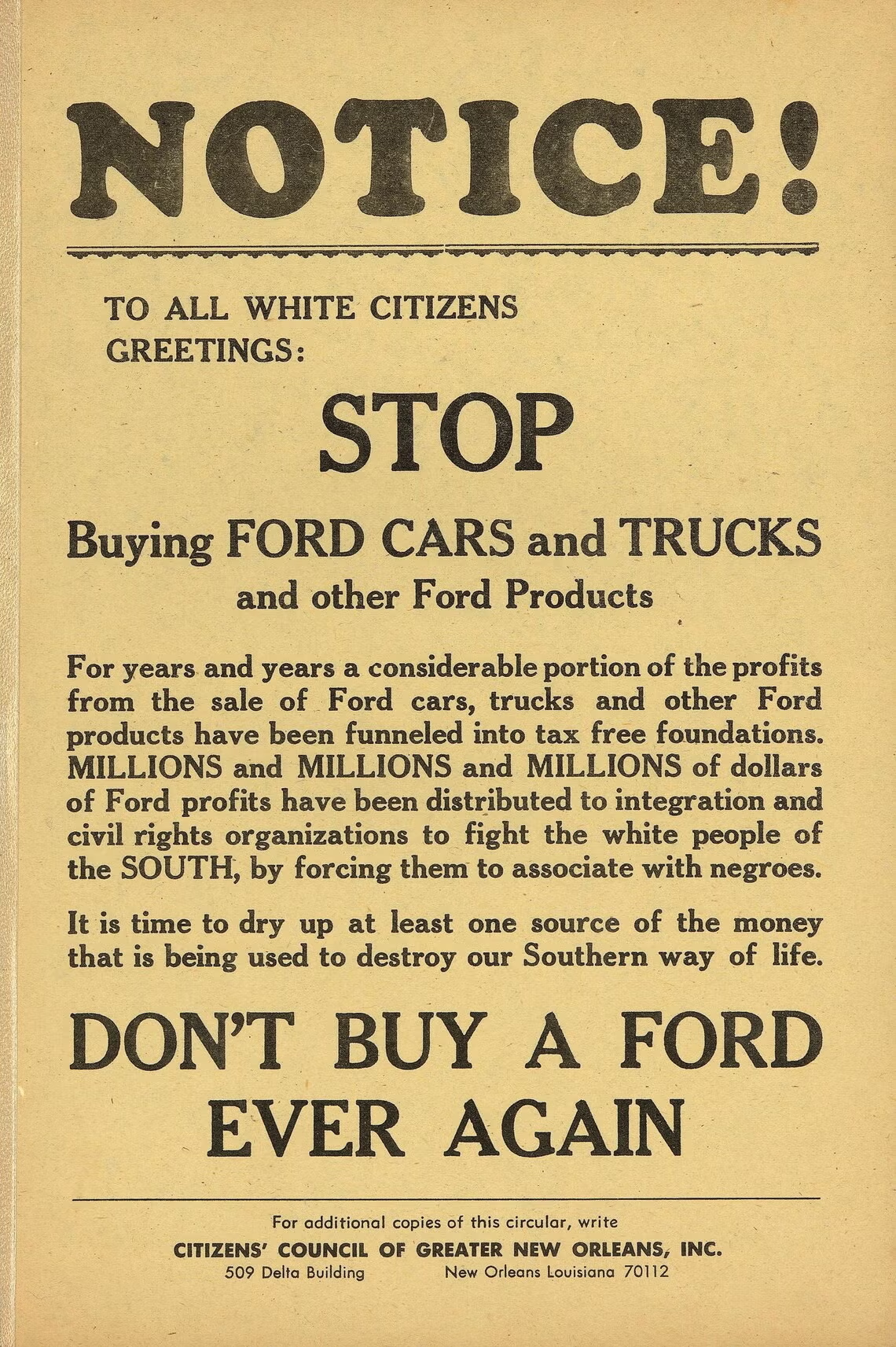
2.
Which of these individuals would have supported the poster’s call to action in 1960?
George Wallace
2.
Which of the following examples called attention to intense debate between White people about segregation?
The 1964 Democratic primary election
1.
Which of the following civil rights campaigns had voter registration as its primary goal?
Mississippi Freedom Summer
Which of the following civil rights campaigns did President Lyndon Johnson say spurred him to send a voting rights bill to Congress?
Selma, Alabama’s “Bloody Sunday” march
2.
Which of the following events led to a labor shortage that resulted in increased government-sponsored immigration of the song’s “bracero” workers?
World War II
Which of the following was an unintended consequence of the Immigration and Nationality Act of 1965?
An increase in the undocumented immigrant population